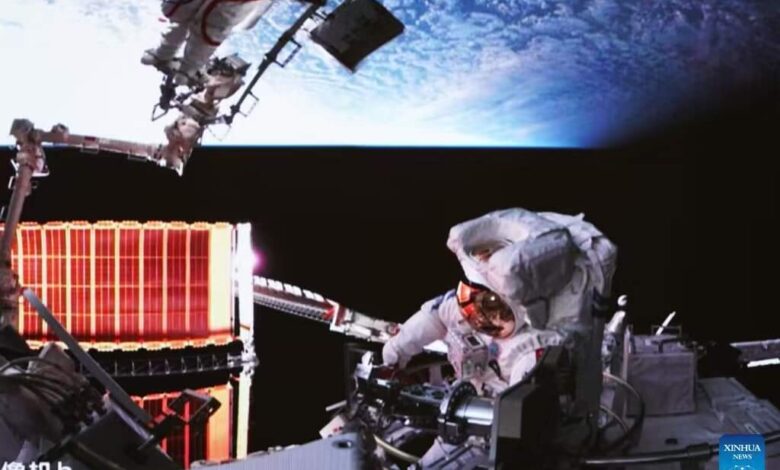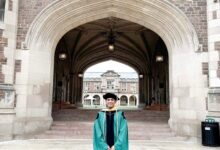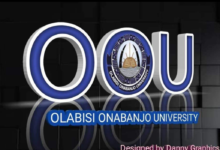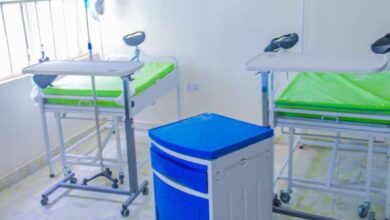China’s Shenzhou-15 Crew’s Remarkable Achievements on Tiangong Space Station

China’s Shenzhou-15 Crew’s Remarkable Achievements on Tiangong Space Station
Introduction: China’s Shenzhou-15 crew has been making incredible strides on the Tiangong space station, contributing significantly to the nation’s space exploration efforts. With an impressive work duration of 181 days and counting, the crew’s accomplishments have encompassed a wide range of activities, including extravehicular activities (EVAs), human factors and ergonomics tech research, aerospace medical experiments, and space science experiments. In this post, we will delve into the crew’s achievements and highlight the invaluable contributions they have made during their time aboard the Tiangong space station.
- Extravehicular Activities (EVAs): The Shenzhou-15 crew has successfully completed four extravehicular activities (EVAs), showcasing their prowess in conducting tasks outside the confines of the space station. These EVAs involve venturing into the vacuum of space to perform critical repairs, maintenance, and installation operations. The crew’s skill and dexterity in carrying out these tasks demonstrate their ability to adapt to the challenges of working in the unforgiving environment of space.
- Human Factors and Ergonomics Tech Researches: Understanding human capabilities and limitations in space is vital for ensuring the well-being and productivity of astronauts during prolonged missions. The Shenzhou-15 crew has dedicated their efforts to conducting eight human factors and ergonomics tech research projects on the Tiangong space station. These investigations aim to optimize the design of spacecraft and equipment, considering factors such as crew comfort, efficiency, and safety. By conducting these researches, the crew is contributing to the continuous improvement of space technology for future missions.
- Aerospace Medical Experiments: Maintaining the health and well-being of astronauts in space is of utmost importance. The Shenzhou-15 crew has conducted a remarkable 28 aerospace medical experiments on board the Tiangong space station. These experiments delve into various aspects of astronaut health, including physiological changes, psychological well-being, and the impact of microgravity on the human body. The data collected from these experiments provides valuable insights for understanding the effects of long-duration space travel and helps in developing effective countermeasures to mitigate potential health risks.
- Space Science Experiments: The pursuit of scientific knowledge is a fundamental objective of any space mission. The Shenzhou-15 crew has actively engaged in 38 space science experiments, exploring diverse fields such as astrophysics, material science, and Earth observation. These experiments contribute to expanding our understanding of the universe, advancing technological capabilities, and finding practical applications for space research. By conducting these experiments, the crew plays a crucial role in furthering scientific progress and fostering international collaboration in space exploration.
Conclusion: China’s Shenzhou-15 crew’s incredible achievements on the Tiangong space station reflect their dedication, expertise, and commitment to advancing space exploration. Through their successful completion of extravehicular activities, human factors and ergonomics tech researches, aerospace medical experiments, and space science experiments, the crew has made significant contributions to various aspects of space exploration and technology.
Their efforts are instrumental in paving the way for future missions and expanding our understanding of the universe. The accomplishments of the Shenzhou-15 crew on the Tiangong space station stand as a testament to China’s growing presence and capabilities in space exploration.
Extravehicular activities (EVAs) are an integral part of space missions, requiring astronauts to venture outside the protective environment of their spacecraft into the vastness of space. The Shenzhou-15 crew has proven their remarkable capabilities by successfully completing four EVAs during their time on the Tiangong space station.
During these EVAs, the crew demonstrates their exceptional skill and adaptability in carrying out essential tasks that are crucial for the smooth operation and maintenance of the space station. From conducting repairs to performing intricate maintenance procedures and installing new equipment, the crew showcases their prowess in overcoming the challenges presented by the harsh vacuum and microgravity environment.
One of the key aspects of EVAs is the need for astronauts to rely on specialized spacesuits, which provide them with the necessary life support systems and protection from the extreme conditions of space. The Shenzhou-15 crew’s ability to effectively operate and navigate in these spacesuits highlights their extensive training and proficiency in working outside the confines of the space station.
The completion of these EVAs also underscores the crew’s meticulous planning, coordination, and teamwork. Each EVA requires careful preparation, including the selection of tools and equipment, communication protocols, and contingency plans. The crew’s ability to execute these complex operations flawlessly speaks to their professionalism and dedication to the mission’s success.
By successfully conducting these EVAs, the Shenzhou-15 crew not only ensures the continued functionality of the Tiangong space station but also contributes to the advancement of space exploration as a whole. Their achievements serve as a testament to their courage, expertise, and adaptability in the face of the extraordinary challenges posed by working in the harsh environment of outer space.
The completion of these EVAs by the Shenzhou-15 crew marks a significant milestone in China’s space exploration endeavors and highlights their growing capabilities in conducting complex space missions. Their accomplishments inspire future generations of astronauts and pave the way for further advancements in our understanding of space and the development of technologies that will enable us to explore and inhabit the cosmos.
The Shenzhou-15 crew’s commitment to conducting human factors and ergonomics tech research projects on the Tiangong space station underscores the importance of understanding
The Shenzhou-15 crew’s dedication to conducting 28 aerospace medical experiments on the Tiangong space station highlights their commitment to ensuring the health and well-being of astronauts during their space missions. These experiments delve into a wide range of areas related to astronaut health, including physiological changes, psychological well-being, and the effects of microgravity on the human body.
One of the primary objectives of these aerospace medical experiments is to gain a deeper understanding of how the human body adapts and reacts to the unique environment of space. The crew collects data on various physiological parameters such as heart rate, blood pressure, bone density, muscle mass, and changes in the immune system. These measurements help scientists and medical professionals better comprehend the effects of microgravity on the body’s systems and identify potential health risks that astronauts may face during extended space missions.
Additionally, the psychological well-being of astronauts is crucial for their overall health and performance. The Shenzhou-15 crew’s experiments also focus on assessing psychological factors such as stress, sleep patterns, cognitive performance, and social dynamics within the confined space of the Tiangong space station. Understanding and addressing these aspects are essential for maintaining astronauts’ mental health and optimizing their productivity and resilience in space.
The data collected from these experiments is invaluable for developing effective countermeasures to mitigate potential health risks associated with long-duration space travel. It aids in the development of exercise routines, nutrition plans, and medical interventions that can help astronauts maintain their physical fitness, musculoskeletal health, cardiovascular function, and immune system during their time in space. Furthermore, the findings contribute to the ongoing efforts to improve astronaut safety and well-being, ensuring their successful return to Earth and long-term health after space missions.
By conducting these aerospace medical experiments, the Shenzhou-15 crew is making significant contributions to advancing our understanding of human physiology in space. Their work enhances our ability to safeguard the health and well-being of astronauts during space exploration, and it paves the way for future missions to push the boundaries of human space travel.
The Shenzhou-15 crew’s active engagement in 38 space science experiments on board the Tiangong space station demonstrates their commitment to advancing scientific knowledge and exploring various fields of research. These experiments span a wide range of disciplines, including astrophysics, material science, and Earth observation, and contribute significantly to expanding our understanding of the universe and its practical applications.
Astrophysics experiments conducted by the crew involve observing celestial objects, studying cosmic radiation, and investigating the nature of dark matter and dark energy. These studies provide crucial insights into the fundamental workings of the universe, helping scientists unravel its mysteries and deepen our understanding of the cosmos.
Material science experiments conducted in space offer unique opportunities to examine the behavior of materials under microgravity conditions. The absence of gravitational forces allows researchers to explore the properties of materials without the interference of Earth’s gravity, leading to the discovery of new materials with enhanced properties and applications. These experiments pave the way for technological advancements and innovations in various industries, such as aerospace, manufacturing, and healthcare.
Earth observation experiments conducted by the crew enable the collection of valuable data on our planet’s climate, weather patterns, natural resources, and environmental changes. The high-resolution imagery and data obtained from space contribute to a better understanding of Earth’s ecosystems, facilitating more effective monitoring and management of our planet’s resources and promoting sustainable development.
Furthermore, the Shenzhou-15 crew’s participation in these space science experiments fosters international collaboration in space exploration. Scientists from different countries and organizations collaborate on these experiments, pooling their expertise and resources to tackle complex scientific questions. Such collaborations not only advance our scientific understanding but also foster diplomatic ties and cooperation among nations.
The outcomes of these space science experiments contribute to scientific progress, technological advancements, and the practical applications of space research. They inspire new discoveries, fuel innovation, and help shape future space missions and exploration strategies. The Shenzhou-15 crew’s contributions to space science experiments play a vital role in expanding the frontiers of knowledge and paving the way for future breakthroughs in space exploration
arewanahiya.com







